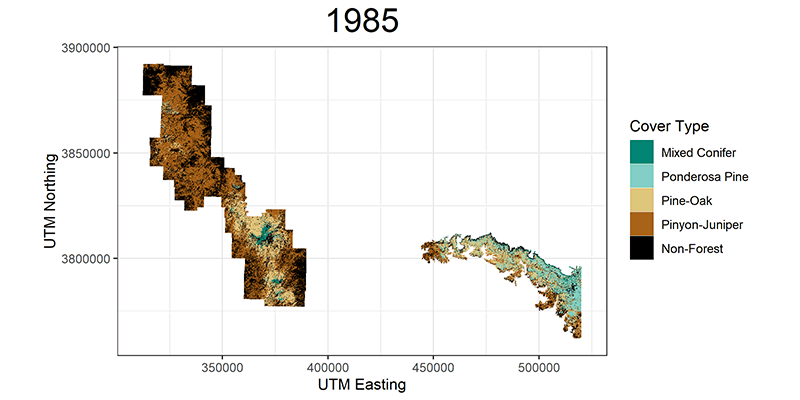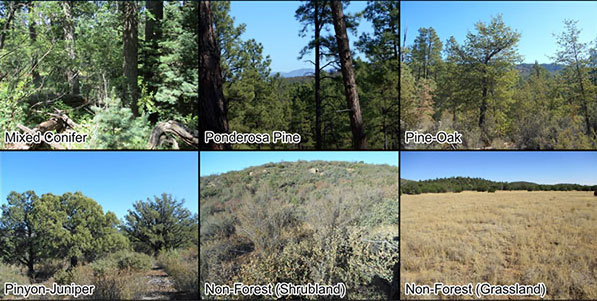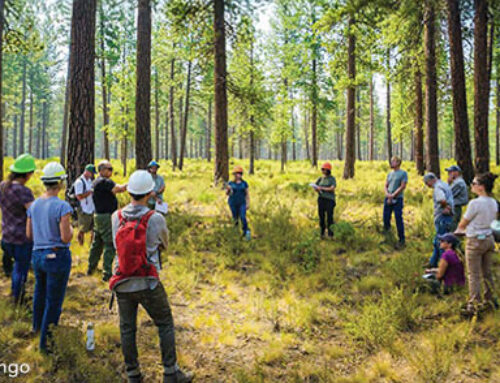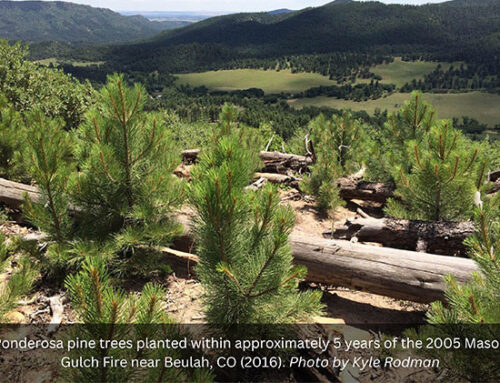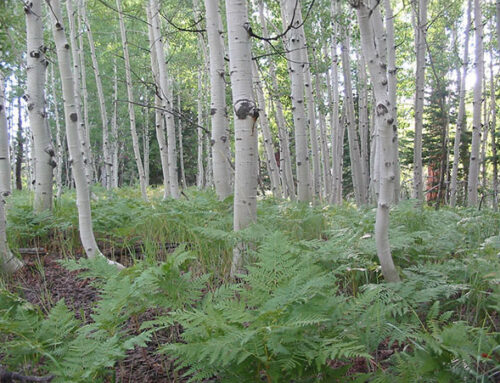Trees are sensitive to the effects of a warming climate, particularly in dry regions such as the southwestern United States. Over the past few decades, climate change has driven increases in wildfire, bark beetle outbreaks, and drought-caused tree mortality throughout the Southwest. These impacts influence a wide range of forest ecosystems and the services they provide to humans and other species.
A recent article published in the journal Forest Ecology and Management analyzed the patterns and drivers of recent changes in trailing-edge forests — those at the warm, dry edge of where forests currently exist — of the Southwest to better understand the effects of a warming climate and guide forest management activities.
On two large landscapes within the Prescott and Tonto National Forests of central Arizona, the study found that wildfire and drought were major drivers of forest loss and transitions among forest types in the study area since the 1980s.
With further increases in drought and wildfire likely to occur over upcoming decades, trailing-edge forests such as those in the Prescott and Tonto National Forests will experience rapid changes, with shifts in species dominance since the early 2000s serving as an initial warning sign. Anticipating such changes will be an important goal for effective forest management throughout the Southwest.
